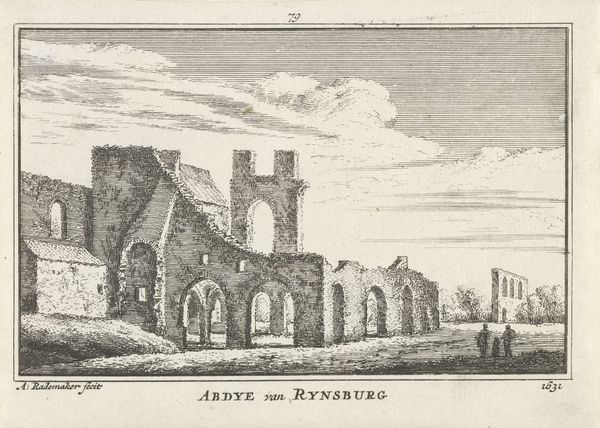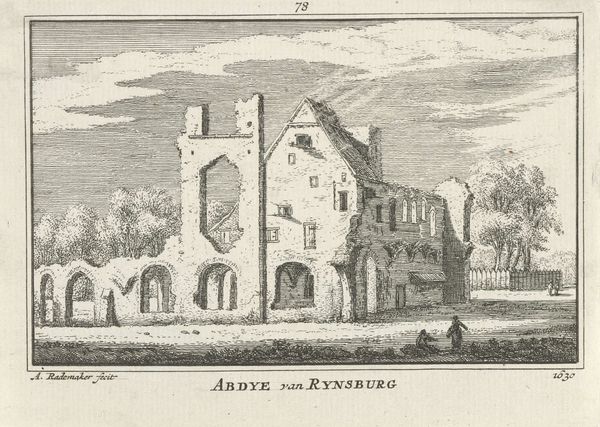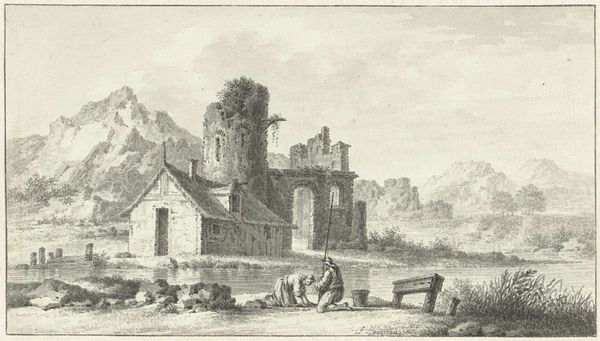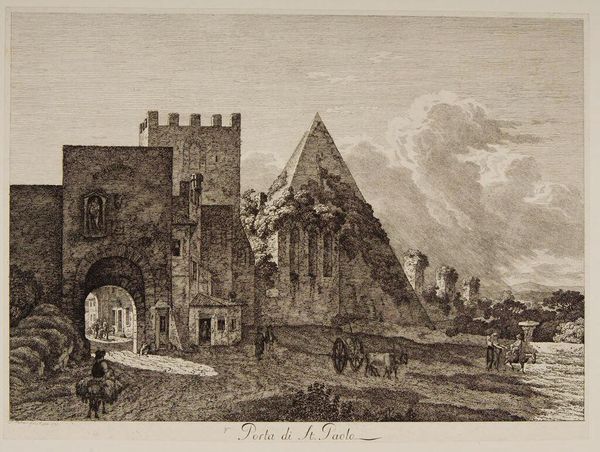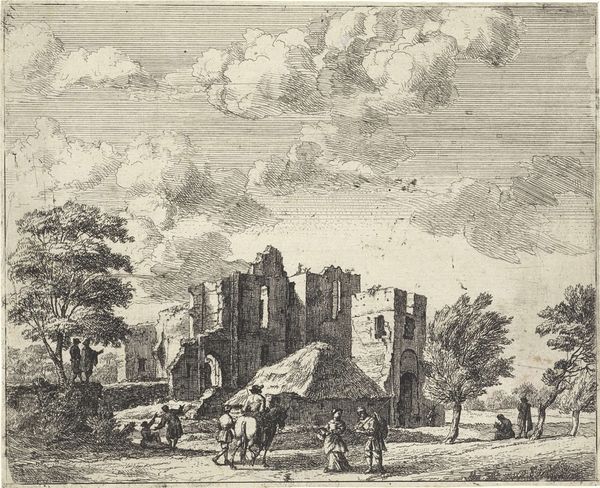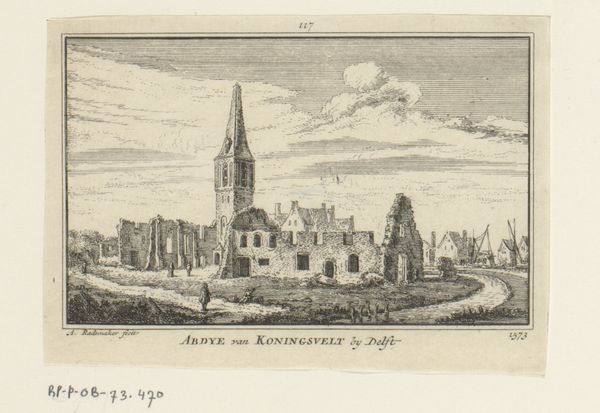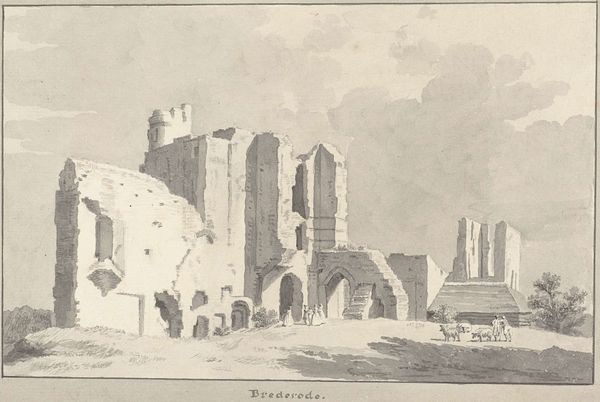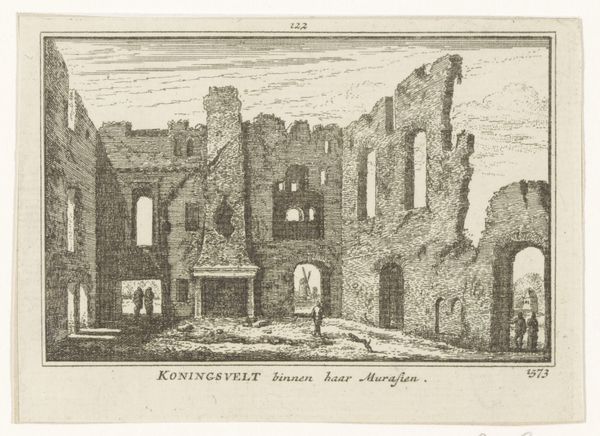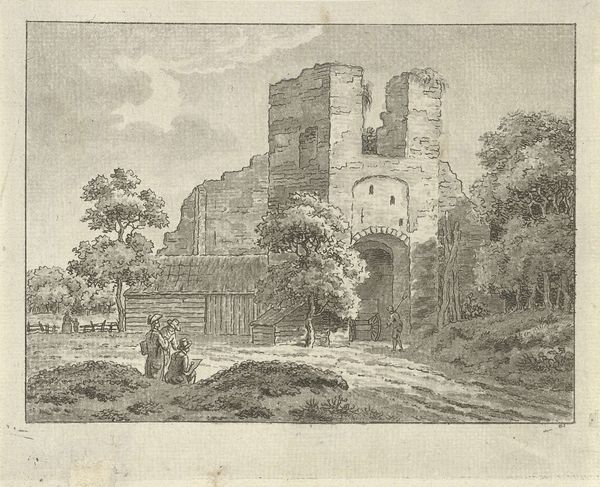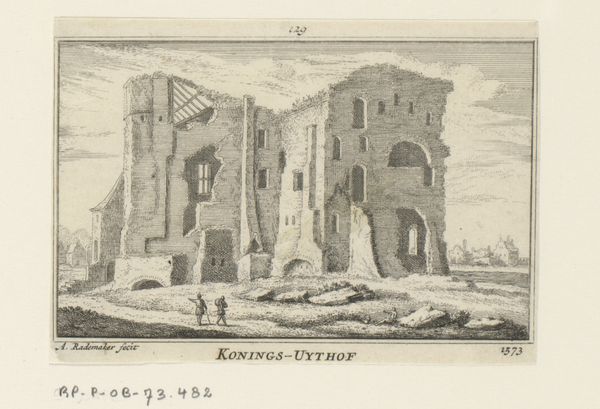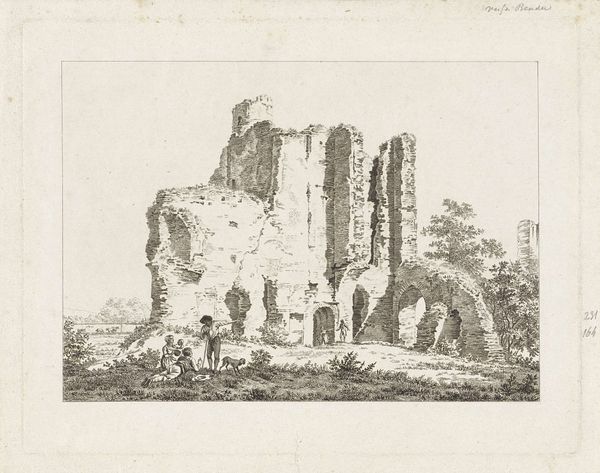
print, engraving, architecture
#
baroque
#
dutch-golden-age
# print
#
landscape
#
engraving
#
architecture
Dimensions: height 80 mm, width 115 mm
Copyright: Rijks Museum: Open Domain
Editor: So this engraving by Abraham Rademaker, titled "Gezicht op de ruïne van de abdij te Rijnsburg," seems to depict a ruined abbey. What catches my eye is how the artist rendered the texture of the decaying stone. What are your thoughts? What stands out to you? Curator: I find the formal arrangement quite compelling. Consider the strategic use of line – the rigorous, almost geometric lines used to depict the architecture itself, in stark contrast with the softer, more organic lines used for the foliage and landscape. Notice how this interplay between geometric precision and organic looseness animates the composition and provides it with significant structural interest. Editor: That’s a great point. I hadn't thought about it in terms of opposing lines! Do you think that contrast is purely aesthetic, or might it carry some other significance? Curator: Indeed, consider that the tension created is also a formal solution. Rademaker’s strategic arrangement enhances the subject’s visual dynamism and invites the viewer to further study the artwork to glean more meaning from the forms. Do you observe the repetition of arches in the ruin's structure? How does it affect your understanding of space and depth? Editor: I do see the repeated arches – they almost pull you into the image, emphasizing the depth. The attention to perspective makes the ruin look incredibly vast. Thanks; it's insightful to consider the lines and repeated shapes in how they guide my eye! Curator: My pleasure. We've considered formal structures but neglected the textural contrasts to our own detriment. Notice, next time, the intrinsic relations. These subtle details construct visual art’s complexity and are what ultimately reward continued consideration.
Comments
No comments
Be the first to comment and join the conversation on the ultimate creative platform.
